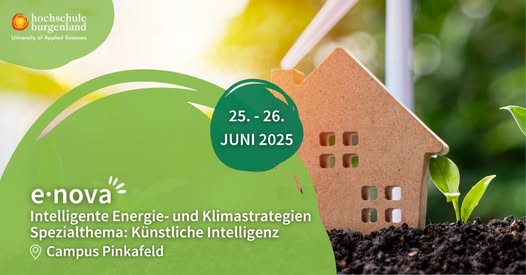The e·nova 2025 conference, held on June 25–26 at Hochschule Burgenland’s Pinkafeld campus, placed a strong spotlight on the Climate CRICES project—an Interreg Central Europe initiative tackling climate resilience in the face of heat, drought, flooding, and biodiversity loss.
A key focus of the conference was the scientific challenge of managing large-scale environmental, water, and meteorological data for effective climate change adaptation. Climate CRICES addresses this challenge through a newly developed dashboard that aims to integrate European and regional datasets to support decision-making by regional and national authorities.
The project was explored in depth through four presentations, followed by an engaging panel discussion. These sessions showcased how the Climate CRICES dashboard could serve as a strategic tool for cross-border climate adaptation planning in Central Europe.
Keynote Sessions:
- Climate CRICES Project – Targets
DI Marion Schönfeldinger, Forschung Burgenland (Austria) - Climate CRICES Strategy
Dr. C. Tamara Avellán, Leibniz Institute of Ecological Urban and Regional Development (Germany) – online - Assembling the Climate_CRICES Dataset: European and Regional Layers
Dr. Anna Uciechowska-Grakowicz, University of Environmental and Life Sciences in Wrocław (Poland) – online - Interactive Dashboard to Analyze Climate CRICES Policies
Dr. Stefania Pascucci, Consorzio Sistema Informativo – CSI Piemonte (Italy) – online
The e·nova conference, which featured parallel sessions on Energy, Buildings, and Environment, provided the ideal setting for this in-depth look at CRICES. Students and researchers from Hochschule Burgenland also contributed their perspectives, reinforcing the university’s role in supporting practical, data-driven approaches to sustainability.
Organized as a certified green event, e·nova 2025 emphasized environmental responsibility through regional catering, digital-only materials, and a low ecological footprint—mirroring the goals of the Climate CRICES project itself.
